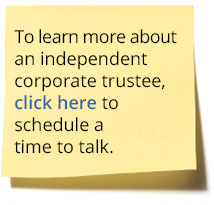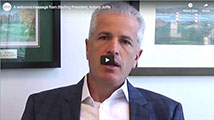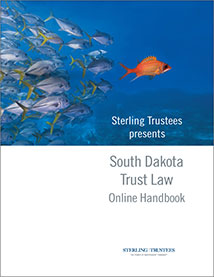Reflections on the 57th Annual University of Miami Heckerling Institute on Estate Planning
By Nicole Byrum JD, CTFA , Chief Fiduciary Officer, Sterling Trustees
I was thrilled to join our President/CEO, Antony Joffe, and our Senior Trust Officer, Emily Pier, at the 57th Annual Heckerling Institute on Estate Planning™, hosted by the University of Miami School of Law. The air was filled with a palpable sense of excitement as practitioners and exhibitors came together in person after two pandemic-imposed virtual events.
This year’s presentations strongly delivered – with a broad range of fascinating topics, from structuring in-bound off-shore investments to designing charitable gifts to estate planning for retirement benefits and for the middle-rich. My key learnings came from sessions focused on choosing a trust jurisdiction and Anti-Money Laundering (AML) implementation. Here are my takeaways.
A LESSON IN HISTORY
Since Sterling Trustees is based in South Dakota, we’re intimately familiar with the myriad advantages that grantors and trust creators find in our state – and that’s why I was especially intrigued by the discussion on the historical origins of trusts.
As the story goes, Franciscan friars arrived in England in the early 13th century at a time when their required vow of poverty precluded them from owning any personal possessions, including land. Trusts were originally developed so that friars could use the land without owning it. This medieval structure evolved over time, eventually deployed mostly to avoid England’s harsh restrictions on inheritance.
The unitary trustee became an indispensable concept, strictly limiting trustee powers that could not be delegated or overridden in the trust agreement. Today’s trust laws have come a long way from the archaic structure defined by rigidity and tradition.
In addition to this fascinating history lesson, Amy K. Kanyuk generously provided sample language in her written materials pertaining to Situs & Governing Law, Trust Duration, the Exclusion of Estate Tax Sensitive Powers and Excluded Fiduciary Status; Indemnification language, among others.
Kanyuk discussed many factors that practitioners should consider when choosing a jurisdiction for their clients, including the Rule Against Perpetuities, Directed Trusts, the ability to waive the Prudent Investor Rule, Creditor Protection, Nonjudicial Trust Modification, State Income Taxation, Quiet Trusts and Virtual Representation. Her comprehensive presentation and accompanying materials were impressively thorough. (P.S. South Dakota not only provides each advantage that she described but backs them with carefully crafted legislation and a robust regulatory framework.)
INDEPENDENT PERSPECTIVES
M. Read Moore and Nancy G. Henderson hosted a great session on the AML initiatives and its effect on estate planners. This topic was particularly timely as the clock ticks down on mandatory compliance with a January 1, 2024, deadline.
Most countries have already implemented statutes and regulations to discourage the unscrupulous use of the financial system for illegal money movement. Many nations already require financial institutions, attorneys, accountants and trust companies to verify client and beneficiary identities and provide this information to a central register.
As new AML implementations unfold – and the U.S. races to line up with other countries – it’s interesting to note that American lawmakers have always found these initiatives to be inconsistent with our national core values, particularly, the importance placed on privacy.
With about 2 million corporations, LLCs, LPs, LLPs and similar business structures formed in the U.S. annually, it’s certainly understandable how the tapestry of resistance to AML legislation and implementation was spun.
The European Union, for instance, began drafting an AML directive in 2013, compelling trust companies to “obtain and hold adequate, accurate, and current information on their beneficial ownership.” The draft also required trustees to hold similar information, which would include the identity of the settlor, protector (if relevant), beneficiaries or class of beneficiaries and any other natural person exercising effective control over the trust.
The directive’s original draft went so far as to require that member states “shall make the registers…publicly available following prior identification of the person wishing to access the information through basic online registration.” The language was shocking to U.S. lawmakers and onlookers alike. A publicly accessible registry? This would never happen in the U.S., would it? Not likely – and to that end, FINCEN has made it clear that the U.S. registry will be used only by government entities and law enforcement.
Moore and Henderson went on to explain how beneficial owners of any legal entity would be reported and then answered our commonly shared questions about who and what a BOI actually is.
“A Beneficial Owner of a Reporting Company is defined as any individual who, directly or indirectly, (A) exercises “substantial control” over a Reporting Company (regardless of any actual “ownership” of the legal entity) or (B) owns or controls more than 25% of the “ownership interests” in the Reporting Company.”
This broad brush captures hundreds of thousands of individuals and will keep many of us busy for a long time. Moore and Henderson’s call to action was tempered by a critical realization: Once the initial registration requirements are fulfilled, there will be value in completing the monumental task. After all, corporate transparency is not a fad – it’s become the cost of doing business, literally.








